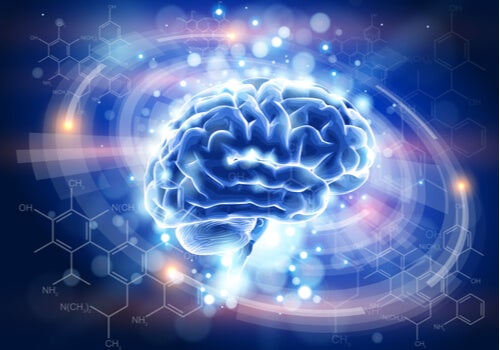The Uses of Electroconvulsive Therapy

Electroconvulsive therapy, or ECT, still carries a certain stigma, partly because of the image it has received in films and television. However, over the years, there have been many improvements in the procedure, and specialists have established protocols and recommendations for implementation.
As a result, it’s now a safe and effective technique that’s tolerated well by patients. With this procedure, it’s been possible to obtain improvements and even remission of symptoms in diseases that didn’t respond to conventional treatments.

What’s electroconvulsive therapy?
Electroconvulsive therapy involves sending small electrical currents through the brain. The goal is to trigger a brief seizure capable of causing changes in the brain that can improve certain problematic symptoms.
Specialists always conduct the procedure in a hospital and under short-term general anesthesia. They place several electrodes on the person’s scalp through which they send an electrical current.
The simulated seizure lasts about 40 seconds and the person will wake up after a few minutes without having any recollection of the treatment.
In order for it to be effective, you must apply it repeatedly, several times a week, for a total of six to 12 sessions. Sometimes, it’s advisable to continue with follow-up ECT, with applications being spaced out over time.
The uses of electroconvulsive therapy
Depression
Electroconvulsive therapy has shown great efficacy in the treatment of depression, with significant improvement rates in 80% of cases, surpassing results achieved through medication. In addition to this, it’s a safe and fast procedure.
Experts specifically recommend it in cases of severe depression, where the patient doesn’t react to treatment through medication. It’s also an effective option when there’s a risk of a depressed patient committing suicide and where rapid improvement is necessary. In addition to that, it’s particularly effective in the treatment of geriatric depression.
Bipolar disorder
The effectiveness shown by electroconvulsive therapy in treating bipolar disorder has been similar to that of lithium, one of the most widely-used drugs to treat this condition. However, ECT actually yields faster results. The cases that most commonly benefit from this technique are those with greater psychomotor agitation.
Catatonia
Catatonia is a clinical condition that can result from a variety of disorders. In this condition, the person can remain immobile, numb, and unresponsive to external stimuli. Response rates to ECT in this syndrome are between 80% and 100%. Because of this, ECT is one of the best treatment alternatives for this syndrome.
Psychotic disorders
ECT is a recommended option in the treatment of schizophrenia and also other psychotic disorders in conjunction with antipsychotic drugs. Wherever it’s possible, there’s a more rapid improvement if the two solutions are combined.
The efficacy is greater the more acute the episode and the shorter the duration. Similarly, cases with significant motor and behavioral impairment benefit most from this treatment.

The adverse effects of electroconvulsive therapy
- Slight disorientation and confusion usually occur after treatment.
- Difficulties in retaining and remembering new information may occur after ECT. The effect is temporary and the patient usually recovers within two weeks at most.
- Amnesia of past events occurs, mostly affecting the most recent memories. Forgetfulness substantially reduces in the six months following treatment, although some gaps may remain.
- Much less frequently, cardiac or respiratory complications may also occur.
Indications
Currently, doctors consider ECT to be a last resort treatment. They usually reserve it for cases where the person doesn’t react to drugs or does so insufficiently. Doctors will also use it for risk situations that require a rapid response. In addition to that, they’ll also use it if, for whatever reason, the patient isn’t able to take the recommended medication.
However, many researchers believe that this treatment shouldn’t just be a last resort, as it’s been shown to be an effective and rapid alternative.
As long as the specialists follow the correct protocols, it can be considered a safe procedure. However, we should always take into account that all interventions have risks. Nevertheless, it could well be the best first option for tackling many illnesses, diseases, and conditions.
All cited sources were thoroughly reviewed by our team to ensure their quality, reliability, currency, and validity. The bibliography of this article was considered reliable and of academic or scientific accuracy.
Ríos, B., & Vicente, N. (2001). Mecanismo de acción de la terapia electroconvulsiva en la depresión. Actas Españolas de Psiquiatría, 29(3), 199-207.
Bernardo, M., & Urretavizcaya, M. (2015). Dignificando una terapia electroconvulsiva basada en la evidencia. Rev Psiquiatr Salud Ment, 8(2), 51-54.
This text is provided for informational purposes only and does not replace consultation with a professional. If in doubt, consult your specialist.








